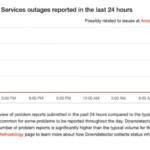After an absence of over 5o years, the United States embarks on a historic return to the moon. Marking a significant milestone in space exploration. This mission, decades in the making, symbolizes a renewed commitment to lunar exploration. Pushing the boundaries of scientific discovery and technological innovation. The USA sets its sights on the lunar surface, reigniting the spirit of exploration for the next generation.
A USA rocket scheduled for a moon mission is set to be launched on December 24, 2023. In the event of any issues during the initial launch window. Two additional opportunities are available on December 25 and 26, emphasizing the commitment to ensure a successful mission to the moon.

The next-generation Vulcan Centaur rocket from the United Launch Alliance (ULA) is scheduled for liftoff from Cape Canaveral Space Force Station in Florida. It will take place at approximately 1:49 AM Eastern Standard Time on Christmas Eve.
Mark Peller, the Vice President of Vulcan Development at ULA. Characterizes the Vulcan Centaur rocket as evolutionary highlighting its incorporation of new technology across all levels. The rockets is strategically designed to advance American aeronautic and space exploration objectives. Facilitating the return of humans to the moon through a series of certification missions supported by the National Aeronautics and Space Administration (NASA).
The Vulcan Centaur is equipped with sophisticated rocket boosters and an upgraded Centaur V upper stage. It functions as a payload bay carrying Astrobotic’s peregrine Lander. This spacecraft is poised to make history as the first private U.S. vehicle to land on the moon. Since the conclusion of the Apollo in 1972 marking over 51 years since the last lunar landing.
READ ALSO: Upholding Methane Pledges in the Oil and Gas Sector
Peregrine will not carry human occupants but it will transport various instruments. Including NASA’s Commercial Lunar Payload Services(CLPS). These payloads aim to drive lunar research and contribute to the exploration of the space economy. Supporting the Artemis crewed missions.









